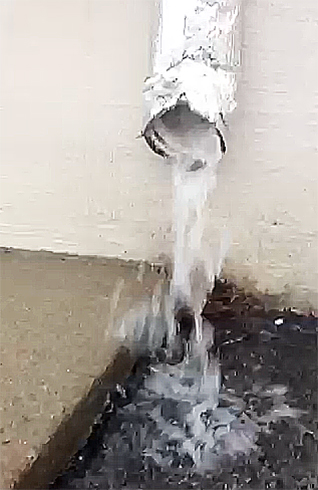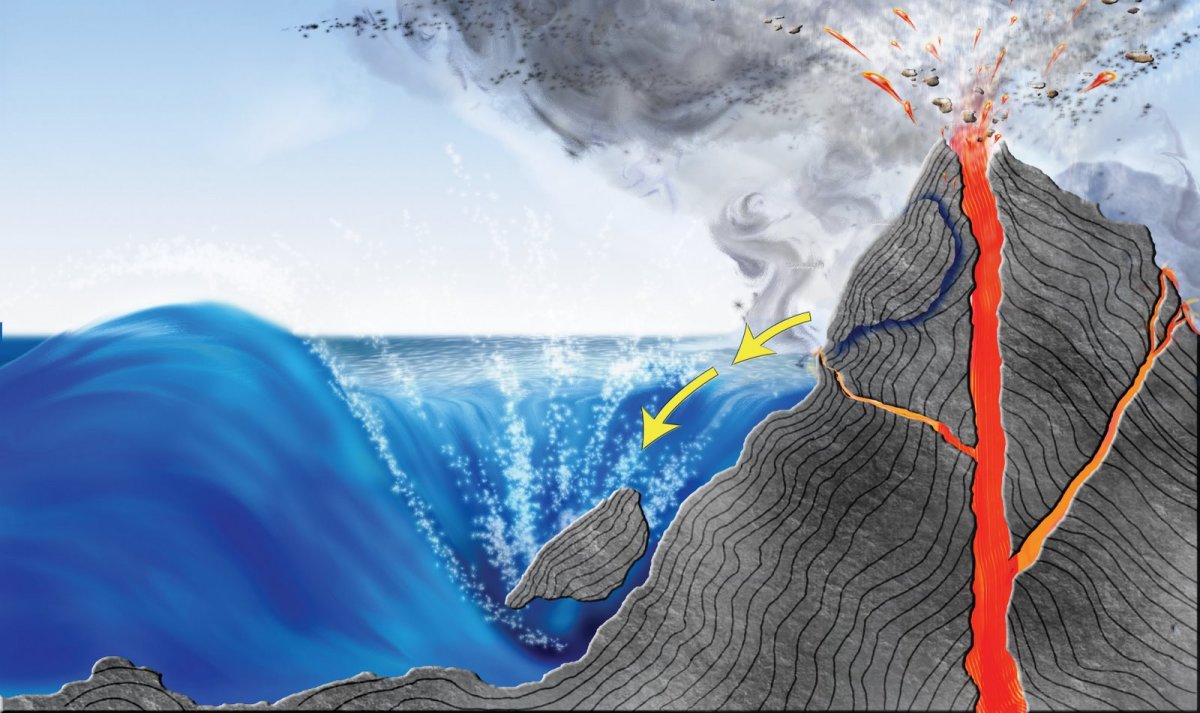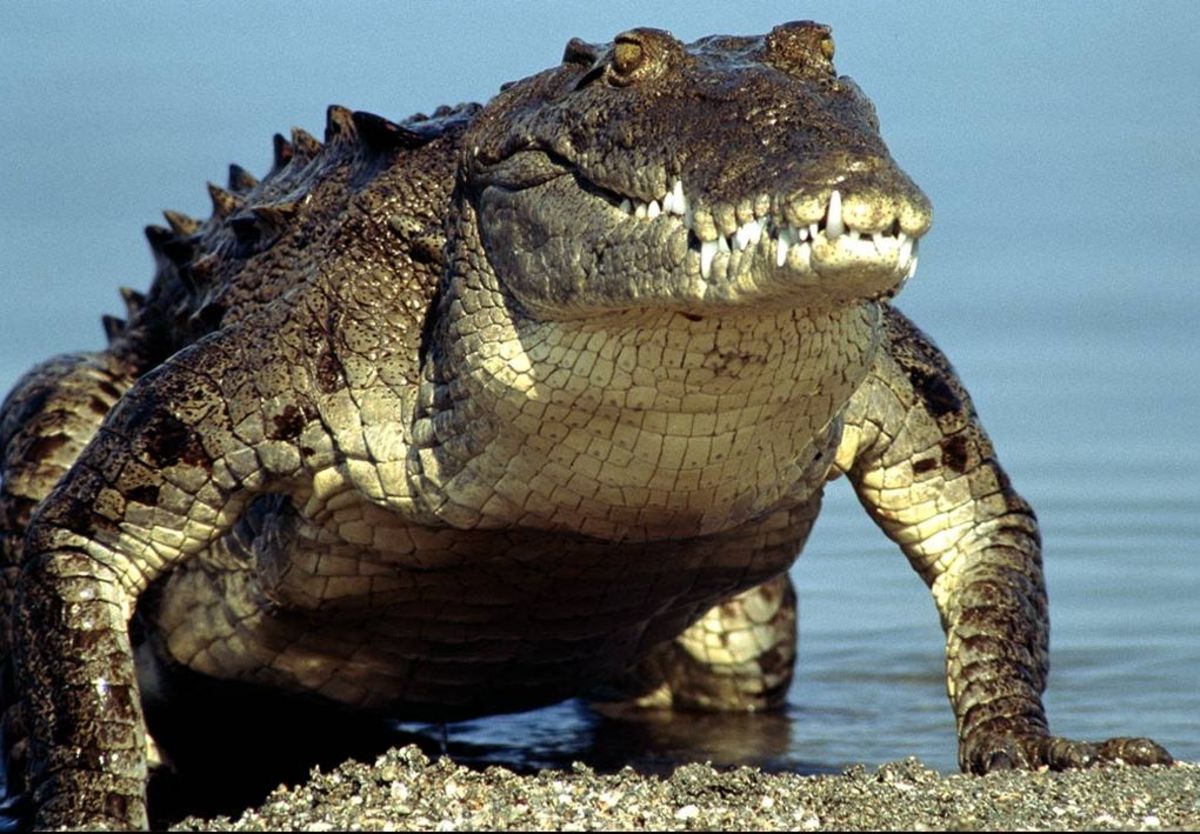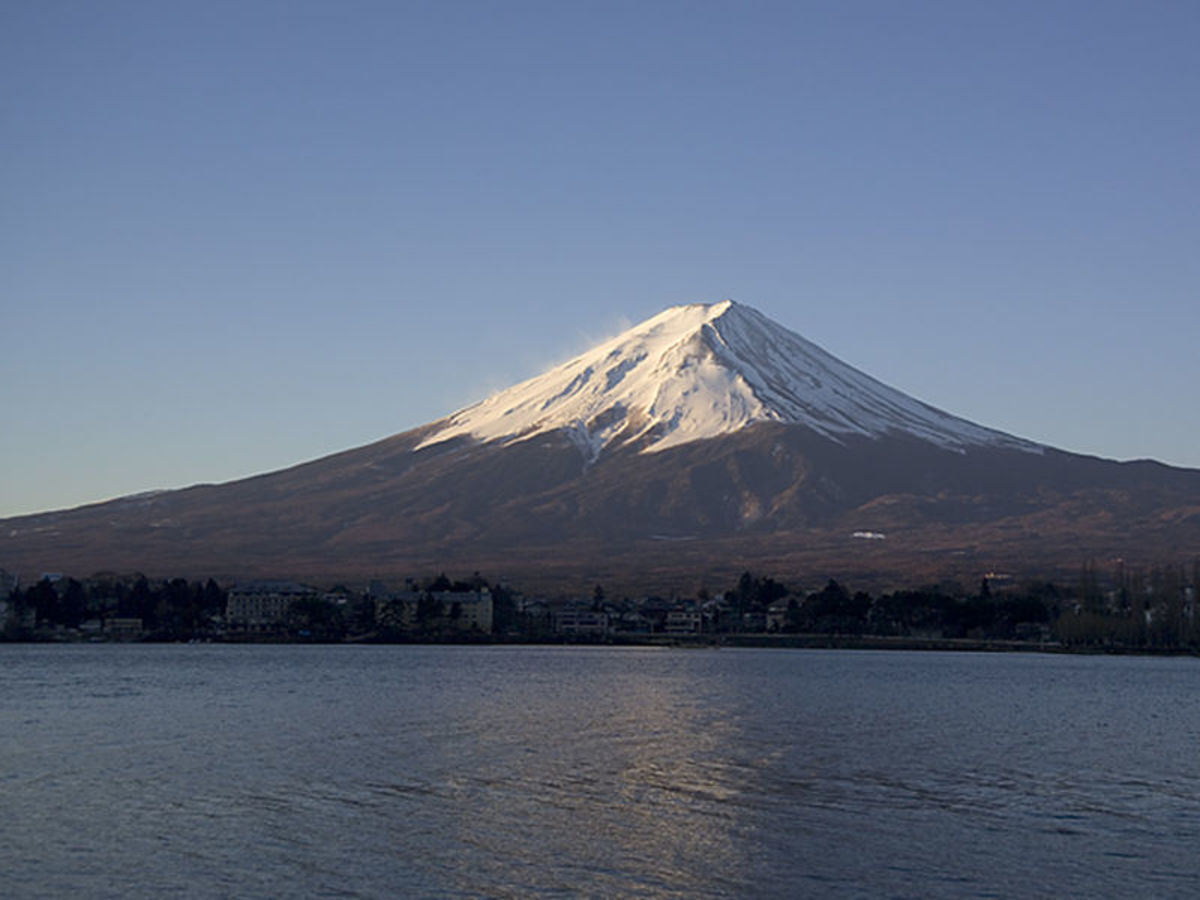Stormwater Management Basics 2
Bad Idea

Goals of Stormwater Management
A first underlying goal of virtually all stormwater management is to calibrate post-development water flows from one’s property to closely (if not exactly) match pre-development water flows. Doing so preserves the status quo, and thereby, one hopes, diminishes any impact and eliminates any unforeseen consequences of the proposed development.
A second underlying goal of virtually all stormwater management is to maintain if not improve the quality of water flowing from one’s property. Here too the goal is to ‘do no harm’, by maintaining the status quo. However, as mankind increasingly alters the character of the Earth’s freshwater, however subtly, it may be a better goal to consistently improve the quality of water flowing from one’s property above its initial quality.
A third underlying goal of virtually all stormwater management is to properly modulate the flows of stormwater off-site to best meet local needs. For example, an agricultural field downstream may have different needs of flowing stormwater than those of a residential subdivision, or a golf course, or an office park, or an industrial facility, or a harbor. One must bear in mind that we are all linked in connecting chains along the water cycle; one person’s outflow is another person’s inflow, and so on. As freshwater — as well as the cycling stormwater from which it is continually replenished — is a scarce and expensive resource to all life, we must pursue the highest quality stewardship of that resource.
Hydrology & Hydraulics
The field of hydrology is generally considered to deal with the predominately natural water processes, such as precipitation, snowmelt, infiltration, percolation, evapotranspiration, surface water flows, runoff and other natural water channeling. The field of hydraulics is generally considered to deal with water processes such as groundwater flow, and the typically human-designed open channel flow, and flow through piping (often under pressure) and other structures. These two fields clearly overlap and intermesh, as both our built environment and our water-handling infrastructure increasingly penetrate and affect pre-existing natural settings. Stormwater management must therefore draw to some degree on the disciplines and bodies of knowledge of both hydrology and hydraulics.
Water Resources Management
Stormwater management can also be seen as a subset of the larger field of water resources management. Water resources management encompasses the acquisition, design, development, control and maintenance of water resources of all kinds upon which humans, animals, plants and crops depend. It will therefore concern itself not only with the purity of municipal drinking water, but also with flood control at a dike or levee, or the environmental reclamation of fouled wetlands. Stormwater management, though, is typically limited to the gathering, manipulation, control and quality primarily of rainfall, snowmelt and related surface waters and groundwater.
Beginnings
The design of any stormwater management system begins with the collection and assessment of a great deal of initial data. Stormwater management systems can be quite complex, and their optimization must be conditioned on a great many variables particular to the site and case at hand. Following is merely a partial listing of the information that must typically be gathered prior to designing a stormwater management system:
- A survey and detailed topographic map of the site of the proposed system.
- Area maps, local drainage patterns, and jurisdictional drainage standards or criteria.
- Complete layout of any proposed development, construction or improvements, including all structures, impervious surfaces, roadways, gradient slopes, wooded or landscaped areas, wetlands, drainageways, etc., including elevation information.
- Locations, sizes and depths of all existing and proposed subgrade utilities.
- Information on both upstream and downstream drainage patterns, flows and/or restrictions.
- Complete local weather and storm data.
- Soil test data, soil boring analysis, soil chemistry and soil strength assessments.
- Seasonal water table, aquifer and/or well information.
- An understanding of any local, regional, state or Federal regulatory, submission, review and approval process and related requirements.
Parameters
Parameters
Over time, organizations such as the American Society of Civil Engineers (ASCE)and the United States Army Corps of Engineers (USACE) have developed rough parameters within which the typical small- to moderate-size stormwater management system — say, for example, a proposed 25-to-40-acre development on an exurban or semi-rural site without severe topography — can likely be designed.
- The system is designed to operate completely by means of gravity flows, through unpressurized piping, with no need for pumping or lift station infrastructure.
- The system is arranged in a dendritic layout, resembling the branching from a tree trunk.
- Limits are placed on minimum water flow velocity and pipe fullness (to insure sewer piping remains flushed and clear), as well as on maximum water flow velocity (to minimize erosive scouring).
- Sewers are placed sufficiently far below ground surface to prevent disruption or crushing due to traffic or other site loads, freezing, or water penetration of basements or low site areas.
- Sewers are of readily available sizes and types of piping, with pipe diameters never decreasing downstream.
- Sewer junctions and connections are designed to insure proper through-flow.
Topography
Clearly, topography is an initial determinant of the nature of any stormwater management system, for it determines where and how and how fast surface water will flow across the ground. A relatively broad and flat plain may hold water, whereas one traversed by channels may drain. Steeply pitched ground will tend to dry out quickly, unless, that is, it is highly impermeable or has no ready outfall. If building within a hollow, surrounded by much higher ground on all sides, one has a much different stormwater management task than when building atop a mountain.
And neighboring topography — beyond the limits of one’s own property or planned development area — also matters, for one should no sooner flood an adjacent lower-lying property than one would wish to be flooded by an adjacent higher-lying one. In fact, an underlying principle of stormwater management in most cases is to replicate, to the greatest degree possible, the pre-existing water flow and drainage conditions of any site with the final post-development conditions.
A Bibliography
Albin, Edward F., Ph. D. Earth Science Made Simple. New York, NY: Broadway Books, 2004.
Barry, Roger G. and Chorley, Richard J. Atmosphere, Weather and Climate, Eighth Edition. New York, NY: Routledge, 2003.
Buckley, Bruce and Hopkins, Edward J. and Whitaker, Richard. Weather: A Visual Guide. Buffalo, NY: Firefly Books (U.S.) Inc., 2006.
Burton, G. Allen, Jr. PhD and Pitt, Robert E., PhD, PE. Stormwater Effects Handbook: A Toolbox for Watershed Managers, Scientists, and Engineers. Boca Raton, FL: CRC Press LLC, 2002.
Calhoun, Yael, Editor. Water Pollution. Philadelphia, PA: Chelsea House Publishers, 2005.
Carpenter, Scott. Lake Erie Journal: Guide to the Official Lake Erie Circle Tour. Millfield, OH: Big River Press, 2011.
Dell, Owen E. Sustainable Landscaping for Dummies. Hoboken, NJ: Wiley Publishing, Inc., 2009.
Dennison, Mark S. Stormwater Discharges: Regulatory Compliance and Best Management Practices. Boca Raton, FL: CRC Press, 1996.
Dunnett, Nigel and Clayden, Andy. Rain Gardens. Portland, OR: Timber Press, Inc., 2007.
Esparza, Adrian X. and McPherson, Guy, Editors. The Planner’s Guide to Natural Resource Conservation. New York, NY: Springer Science+Business Media, LLC, 2009.
Finlayson, Max and Moser, Michael. Wetlands. New York, NY: facts On File, Inc., 1991.
Folger, Tim, “Rising Seas.” National Geographic. September 2013: pgs. 30-59.
Freeman, Jennifer. Science 101: Ecology. Irvington, NY: HarperCollins Publishers, 2007.
Haan, C. T. and Barfield, B. J. and Hayes, J. C. Design Hydrology and Sedimentology for Small Catchments. San Diego, CS: Academic Press, 1994.
Haestad Methods and Durrans, S. Rocky. Stormwater Conveyance Modeling and Design. Waterbury, CT: Haestad Methods, Inc., 2003.
Kemp, Roger L., Editor. Cities and Water: A Handbook for Planning. Jefferson, NC: McFarland & Company, Inc., Publishers, 2009.
The Lake County Historical Society. History of Geauga and Lake Counties, Ohio. Evansville, IN: Unagraphic, Inc. 1973.
Lambert, David and The Diagram Group. The Field Guide to Geology, Updated Edition. New York, NY: Facts On File, Inc., 1988, 1998.
Lisowski, Marylin and Williams, Robert A. Wetlands. New York, NY: Franklin Watts, 1997.
Luhr, James F., Editor-in-Chief. Earth. New York, NY: DK Publishing, Inc. 2003.
Lynch, Kevin. Site Planning. Cambridge, MA: MIT Press, 1974.
Mauser, Wolfram. Water Resources: Efficient, Sustainable and Equitable Use. London, UK: Haus Publishing Ltd., 2007.
Mays, Larry W. Water Resources Engineering. New York, NY: John Wiley & Sons, Inc., 2001.
Middleton, Nick. Rivers: A Very Short Introduction. Oxford, UK: Oxford University Press, 2012.
Newton, David E. Chemistry of the Environment. New York, NY: Facts On File, Inc., 2007.
Ohio Department of Natural Resources, Office of Coastal Management. Ohio Coastal Atlas. Sandusky, OH: Office of Coastal Management, 2005.
Olgyay, Victor. Design With Climate. Princeton, NJ: Princeton University Press, 1969.
Peacefull, Leonard, Editor. A Geography of Ohio. Kent, OH: Kent State University Press, 1996.
Poertner, Herbert G., Principal Investigator and Contractor. Practices in Detention of Urban Stormwater Runoff. Washington, DC: American Public Works Association, 1974.
Prud’homme, Alex. Hydrofracking: What Everyone Needs to Know. Oxford, UK: Oxford University Press, 2014.
Rezendes, Paul and Roy, Paulette. Wetlands: The Web of Life. Burlington, VT: Verve Editions, 1996.
Robinette, Gary O. Plants, People and Environmental Quality. Washington, DC: U.S. Department odf the Interior, National Park Service, 1972.
Russ, Thomas H. Site Planning and Design Handbook. New York, NY: McGraw-Hill, 2002.
Smoley, C. K. and U.S. EPA, Office of Water. Storm Water Management for Construction Activities: Developing Pollution Prevention Plans and Best Management Practices. Boca Raton, FL: CRC Press, Inc., 1993.
Stahre, Peter and Urbonas, Ben. Stormwater Detention For Drainage, Water Quality and CSO Management. Englewood Cliffs, NJ: Prentice-Hall, Inc., 1990.
Szubski, Rosemary N. Editor. A Natural History of Lake County, Ohio. Cleveland, OH: The Cleveland Museum of Natural History, 1993.
Wanielista, Martin, P, PE, PhD and Yousef, Yousef A., PE, PhD. Stormwater Management. New York, NY: John Wiley & Sons, Inc., 1993.
Whipple, William; Grigg, Neil S.; Grizzard, Thomas; Randall, Clifford W.; Shubinski, Robert P.; Tucker, L. Scott. Stormwater Management in Urbanizing Areas. Englewood Cliffs, NJ: Prentice-Hall, Inc. 1983.
Wills, Christopher. Green Equilibrium: The Vital Balance of Humans & Nature. Oxford, UK: Oxford University Press, 2013
Woodhead, James A., Editor. Geology, Volume 1. Pasadena, CA: Salem Press, Inc., 1999.
- Stormwater Management Basics 1
Welcome to the first of several articles explaining the concepts of current stormwater management and design (for architects, civil engineers, land planners and laymen). - Stormwater Management Basics 3
Let's now investigate features of geology and soil composition, and their impact on how we collect, channel and divert storm water. - Stormwater Management Basics 4
To properly handle storm water, one must first understand what contributes to and affects water flow.





